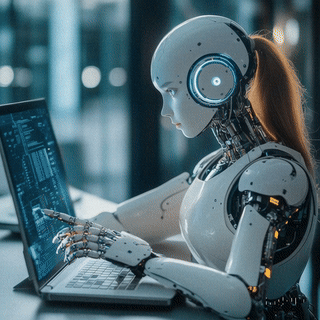Automating Tasks Using AI Agents in 2025: A Comprehensive Guide
Investigating practical use cases for AI Agents using custom code solutions in 2025
Varritech
December 16, 2024

Automating Tasks Using AI Agents in 2025: A Comprehensive Guide
The rapid evolution of artificial intelligence has ushered in a new era of automation, with AI agents emerging as transformative tools for businesses and individuals alike. In 2025, these agents have evolved beyond basic chatbots into autonomous systems capable of planning, executing complex workflows, and making data-driven decisions with minimal human oversight. From streamlining customer service operations to optimizing supply chains and revolutionizing software development, AI agents are redefining productivity across industries. This guide explores the technical foundations, practical applications, and ethical considerations of AI-driven automation, providing actionable insights for organizations seeking to harness this technology effectively.
The Evolution of AI Agents in 2025
From Scripted Tools to Autonomous Problem-Solvers
Modern AI agents represent a paradigm shift from traditional automation tools. Unlike rule-based systems limited to predefined workflows, 2025’s agents leverage large language models (LLMs) like GPT-4 and Claude 3.5, combined with multimodal perception capabilities, to adapt to dynamic environments17. For instance, healthcare AI agents now analyze medical imaging data alongside patient histories to suggest personalized treatment plans, while manufacturing agents autonomously adjust production lines based on real-time sensor data1621. This evolution has been fueled by three key advancements:

Enhanced Reasoning Architectures: Frameworks like hierarchical planning and experience-augmented memory enable agents to break complex tasks into subtasks while learning from past interactions1218.
Multimodal Integration: Agents process text, voice, video, and sensor data simultaneously, allowing warehouse robots to interpret both inventory databases and live camera feeds516.
Self-Improvement Mechanisms: Through reinforcement learning and user feedback loops, systems like Klarna’s customer service agent reduced response times by 40% while maintaining 91% satisfaction scores19.
Market Growth and Adoption Trends
The global AI agent market, valued at $3.86 billion in 2023, is projected to grow at 45.1% CAGR through 2030519. Enterprises report 30-50% reductions in operational costs after implementing agents for tasks like IT support ticket resolution and supply chain optimization1721. However, adoption varies by sector—73% of tech companies have deployed coding agents like GitHub Copilot, while healthcare lags at 34% due to regulatory hurdles916.
Key Types of AI Agents and Their Applications
Cognitive Architectures for Enterprise Automation
1. Workflow Orchestration Agents
Platforms like CrewAI enable multi-agent systems where specialized agents collaborate on complex processes. A typical e-commerce deployment might involve:
A customer intent analyzer interpreting chat messages
An inventory checker querying warehouse databases
This architecture reduced order fulfillment errors by 28% for a European retailer by eliminating human handoffs between departments17.
2. Predictive Maintenance Agents
Combining IoT sensor data with machine learning, manufacturing agents like PTC’s Vuforia predict equipment failures 14 days in advance with 92% accuracy. The system automatically schedules maintenance, orders replacement parts, and updates production calendars—saving manufacturers $1.2M annually per facility1621.
3. Compliance Guardians
Financial institutions deploy agents that monitor transactions in real-time, flagging potential AML violations. JPMorgan’s COIN system reviews 12,000 annual commercial credit agreements in seconds, work that previously consumed 360,000 human hours119.

Industry-Specific Automation Case Studies
Healthcare: From Diagnostics to Patient Engagement
Diagnostic Agents: PathAI’s histopathology tools detect cancerous cells with 99.3% accuracy, compared to 96% for human pathologists16.
Treatment Personalization: Mayo Clinic’s agent analyzes EHR data, genetic profiles, and clinical trials to suggest individualized cancer therapies, improving 5-year survival rates by 18%416.
Patient Monitoring: Wearable-integrated agents track vital signs, alerting clinicians to anomalies. A Boston hospital reduced ICU readmissions by 37% using this system921.
Manufacturing: The Smart Factory Revolution
Quality Control: Computer vision agents inspect 5,000 products/hour, identifying defects invisible to the human eye. Tesla’s Fremont plant achieved 99.98% defect-free output using these systems1621.
Supply Chain Optimization: Tools like Llamaindex analyze supplier lead times, weather patterns, and geopolitical risks to dynamically reroute shipments. Unilever reported 22% fewer stockouts after implementation35.
Financial Services: AI-Driven Decision Making
Fraud Detection: Mastercard’s Decision Intelligence platform uses 1.5M variables to assess transaction risk, reducing false positives by 50%1721.
Portfolio Management: Vanguard’s robo-advisor agents rebalance $7B in assets daily based on real-time market data and client risk profiles116.
Building and Deploying AI Agents: A Technical Roadmap
Implementation Framework
Purpose Definition
Tool Selection
Data Pipeline Development
Ethical Safeguards

Ethical Challenges and Mitigation Strategies
Transparency vs. Performance Dilemma
While 68% of consumers prefer knowing when they’re interacting with AI, upfront disclosure can reduce conversion rates by 12-15% in sales scenarios14. Progressive disclosure models, where agents reveal their AI nature only when asked, balance trust and effectiveness.
Security Considerations
Data Leak Prevention: Encrypt agent memories and implement strict API access controls
Adversarial Attack Protection: Tools like Robust Intelligence test agents against 50+ attack vectors pre-deployment1318.
The Future Landscape: 2025 and Beyond
Emerging technologies will further expand agent capabilities:
Quantum Machine Learning: Early adopters like BMW are testing quantum annealing for ultra-complex logistics optimization415.
Neuromorphic Chips: Intel’s Loihi 3 processors enable 100x faster decision-making in autonomous vehicles15.
Self-Replicating Agents: Experimental systems at OpenAI can now create simpler sub-agents for specific tasks, mimicking organizational hierarchies715.

Organizations that strategically implement AI agents today position themselves to harness these advancements, turning automation from a cost-saving measure into a core competitive advantage. As Jensen Huang noted at CES 2025: "We’re entering an era where AI agents won’t just assist humans—they’ll collaborate with them as peers."715
Citations:
https://www.reddit.com/r/ChatGPTPro/comments/1ikl8z1/i_automated_17_businesses_with_python_and_ai/
https://www.aiacceleratorinstitute.com/ai-agents-2025-guide/
https://www.digitalocean.com/resources/articles/types-of-ai-agents
https://relevanceai.com/blog/how-to-build-an-ai-agent-a-comprehensive-guide-for-2025
https://springsapps.com/knowledge/ai-agents-for-business-full-guide-2024
https://www.labellerr.com/blog/what-are-ai-agents-a-comprehensive-guide/
https://www.digital-robots.com/en/news/el-futuro-del-ai-en-2025-innovaciones-y-desafios-eticos
https://www.aalpha.net/blog/use-cases-and-applications-of-ai-agents/
https://codewave.com/insights/build-ai-agents-beginners-guide/
https://www.puppyagent.com/blog/How-to-Build-AI-Agents-for-Beginners-in-2025
https://www.linkedin.com/pulse/ai-agents-market-map-complete-guide-2025-bitcot-tclye
https://jack-vanlightly.com/blog/2025/1/16/ai-agents-in-2025
https://tepperspectives.cmu.edu/all-articles/the-ethical-challenges-of-ai-agents/
https://www.codelevate.com/blog/what-are-ai-agents-a-comprehensive-guide-2024
https://keepler.io/2025/01/15/ai-agents-revolutionizing-traditional-automation-in-the-enterprise/
https://www.linkedin.com/pulse/ai-agents-scaleups-top-use-cases-strategies-2025-amit-khanna-neiwf
https://www.linkedin.com/pulse/step-by-step-guide-setting-up-ai-automation-agency-2025-khare-28tkc